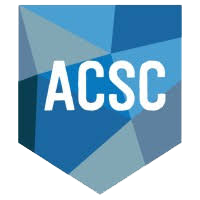 Hybrid IT is a new paradigm that is redefining the function of IT within an organization. However, the implementation of new archetypes always comes with challenges along the way. Change is never easy, but often worth it. The traditional on premise enterprise took a long time to build, so naturally, rebuilding and modernizing it will not happen overnight.
Hybrid IT is a new paradigm that is redefining the function of IT within an organization. However, the implementation of new archetypes always comes with challenges along the way. Change is never easy, but often worth it. The traditional on premise enterprise took a long time to build, so naturally, rebuilding and modernizing it will not happen overnight.
It has not even been a decade since cloud computing exploded on the scene and began competing directly with traditional IT. Suddenly, internal IT was not the only game in town and the concept of shadow IT began to arise. Just as customers will seek out better products and services to meet their needs, business units and department managers will seek problem solving, cost reducing solutions to fit their business objectives. If necessary, they will do so with or without the blessings of the CIO. In fact, according to a Brocade study of global CIOs, 80% had seen some form of unauthorized cloud/SaaS usage within their companies.
Advice for Managing Hybrid IT Effectively
Balance Bimodal IT within your Environment
According to IDG research on the global enterprise, only 3% of companies are 100% committed to the cloud, which means that most host some form of infrastructure on premise. Although at times it may seem like everyone is flocking to the cloud, the fact is that the majority of enterprise applications are not cloud ready. Sometimes this is because of security and compliance issues, but in other cases there may be legacy, budgetary, or political issues. Whatever the reason, the reality for most companies is what Gartner refers to as bimodal IT.
Bimodal IT is the practice of managing two modes of IT, each designed to develop and deliver information and technology-intensive services in its own way. Here’s how it works:
- Mode 1 is traditional, emphasizing predictability, accuracy, and stability.
- Mode 2 is exploratory, emphasizing agility and speed.
Gartner goes on to explain, “Bimodal capability that marries the renovation of the IT core with the exploratory approach to developing new digital products and services is essential for an enterprise to survive and flourish in the digital era. Both modes will play a crucial role in innovation and digital transformation.”
The challenge of bimodal IT is how to pursue both technology platforms simultaneously as a single departmental entity. It is important to ensure each mode has skilled staff and the technology to support both initiatives, because both require a different management style and skill set. The teams assigned to each mode must think collaboratively, not competitively. Open communication between the two is key in order to create a highly concerted cross business that addresses all the needs of the organization. However, the bimodal approach is not an endpoint; the eventual goal is to modernize everything.
Use Hybrid IT to Target Workloads for Optimum Infrastructure
Creating platforms for workloads in a traditional IT environment is clear-cut: deploy a new server group and either install the needed application or hand it over to the developers. Using hybrid IT, workloads are not automatically assigned in default fashion. Because of this, each workload must be carefully evaluated for its inherent level of:
- Agility
- Scalability
- Traffic fluctuations
- Resiliency and availability
- Speed and latency requirements
- Mobility and reach
- Resource requirements
- Security
Once these measures are evaluated and quantified, the goal is to assign each workload to the infrastructure that achieves a balance of the following conditions:
- Empowering the business units and users that will utilize it
- Ensuring that the solution will meet any and all business objectives
- Implementing a solution at the lowest cost possible
- Retaining governance and control
- Self-provisioning deployment
A thorough evaluation and assignment process will ensure that the hybrid IT implementation is successful and fulfills the needs of the organization and its users. This type of collaborative effort will also foster a sense of ownership with its end users. Over time, these workloads are added to a catalog that provides users the ability to simply select the service offering they need.
If your organization is implementing a hybrid IT strategy, it’s important not to go at it alone. Contact WEI for assistance in managing the new infrastructure and maintaining it over time. For more information, check out our white paper, "An Introduction to the New IT Approach Called Hybrid IT."












